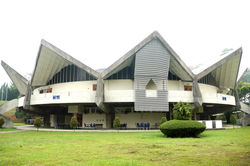lim joe onn
 |
|---|
 |
 |
 |
 |
 |
 |
|---|
 |
 |
 |
 |
 |
eco campaign 2015 eco ideas proposal competition
first runner-up
19 June 2015
In this varsity-level competition, participants from all schools present their ideas on ways to decreasing carbon-emission, urban heat island effect and other negative impacts on our environment through ways of waste management, innovative technology or any other methods.
Our team's idea is to revolutionize residential housing plans by redirecting waste from housing units to an urban farming zone. Agriculture with close proximity to the living areas produces organic food back to the residents. This decreases the demand of transportation of food from other places and fully utilize waste as fertilizer, thus making residential houses more self-sustainable.
eco campaign 2015 eco ideas proposal competition
first runner-up
19 June 2015
In this varsity-level competition, participants from all schools present their ideas on ways to decreasing carbon-emission, urban heat island effect and other negative impacts on our environment through ways of waste management, innovative technology or any other methods.
Our team's idea is to revolutionize residential housing plans by redirecting waste from housing units to an urban farming zone. Agriculture with close proximity to the living areas produces organic food back to the residents. This decreases the demand of transportation of food from other places and fully utilize waste as fertilizer, thus making residential houses more self-sustainable.
eco campaign 2015 eco ideas proposal competition
first runner-up
19 June 2015
In this varsity-level competition, participants from all schools present their ideas on ways to decreasing carbon-emission, urban heat island effect and other negative impacts on our environment through ways of waste management, innovative technology or any other methods.
Our team's idea is to revolutionize residential housing plans by redirecting waste from housing units to an urban farming zone. Agriculture with close proximity to the living areas produces organic food back to the residents. This decreases the demand of transportation of food from other places and fully utilize waste as fertilizer, thus making residential houses more self-sustainable.
 |  |
|---|---|
 |  |
 |  |
 |  |
 |  |
|---|---|
 |  |
 |  |
 |  |
 |  |
|---|---|
 |  |
 |  |
 |  |
 |  |
|---|---|
 |  |
 |  |
 |  |
|---|---|
 |  |
 |  |
culture & history 2
research timeline analysis
The greatest architectural transformation in Malaysia followed its independence in 1957. Proud symbols of nationhood were expressed in new and daring forms. Innovative construction techniques and industrialized components enabled the erection
of the first prominent buildings and skyscrapers.
This research project involves documenting, analyzing, producing and presenting a critical chronological timeline interpretation of Modern Malaysian architectural history. This project
emphasizes post-independence architecture to
understand the influences of post-modernism to architectural design, building science and urban design.
My group is given the Petaling Jaya area to study. Next, we divided into 4 sub-groups, each in charge of different parts of the town.
My draft analysis of SGFA:
Some of our photos taken in Petaling Jaya:

 |  |  |
|---|---|---|
 |  |  |
 |
 |
|---|
 |
 |  |
|---|---|
 |  |
 |  |
 |

The final printed product:
Interim presentation:
final timeline